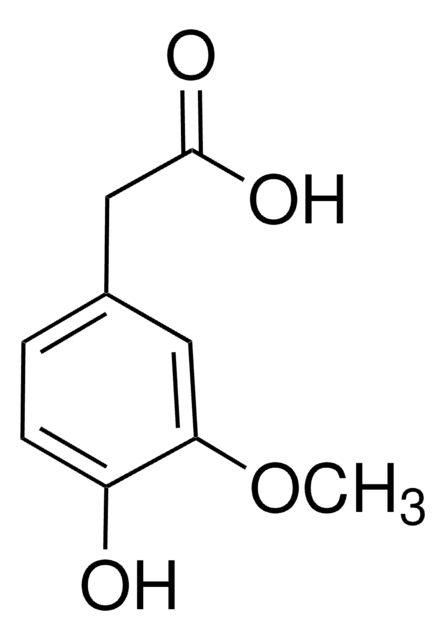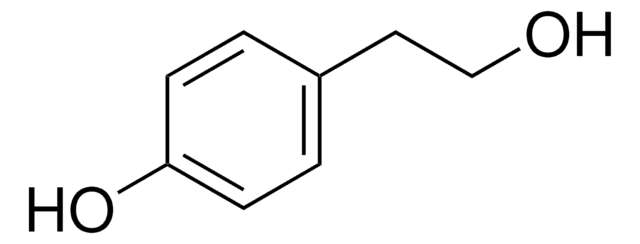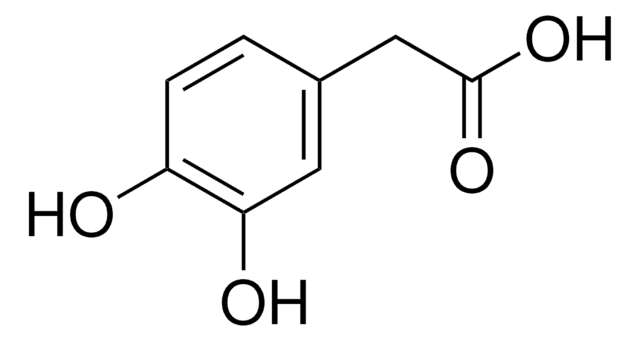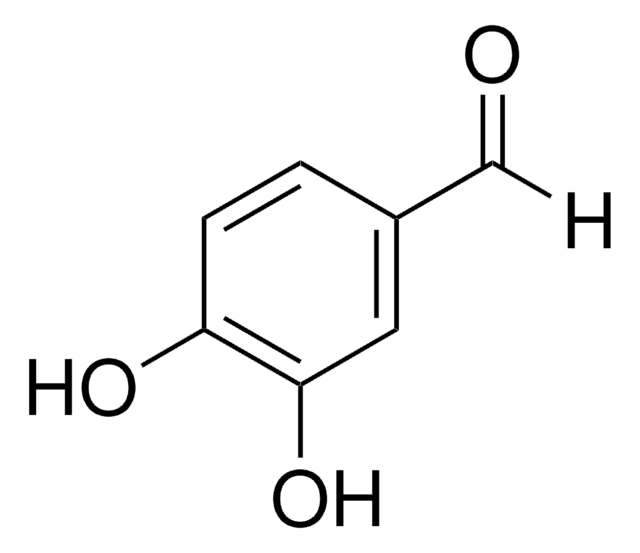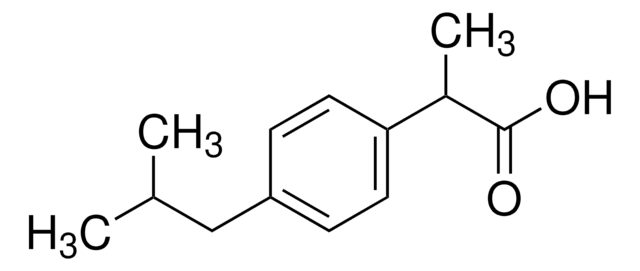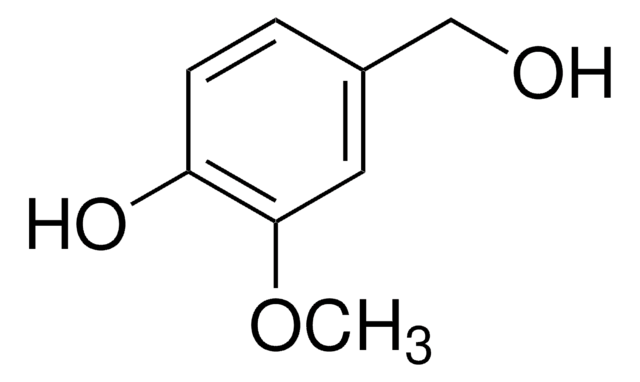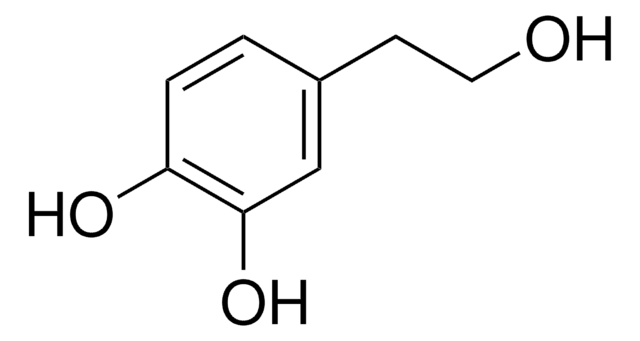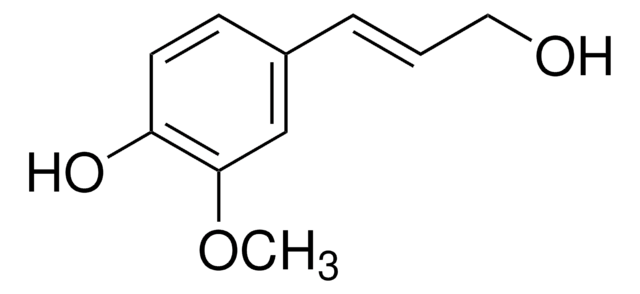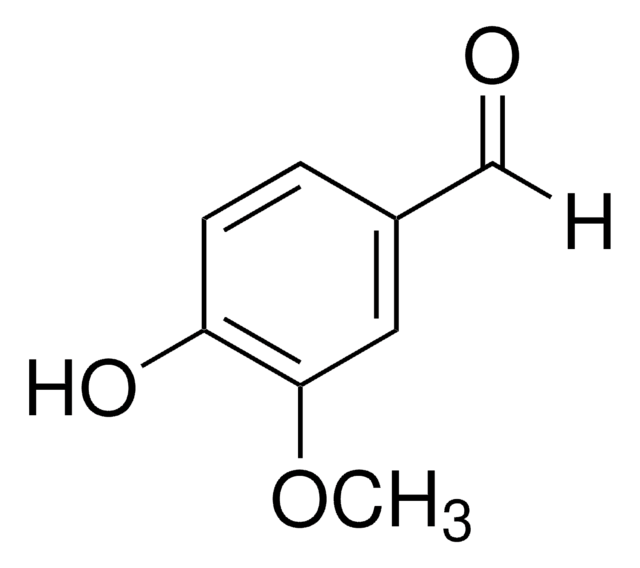148830
Homovanillyl alcohol
99%
Synonym(s):
4-Hydroxy-3-methoxyphenethanol, 4-Hydroxy-3-methoxyphenethyl alcohol
Sign Into View Organizational & Contract Pricing
All Photos(1)
About This Item
Linear Formula:
HOC6H3(OCH3)CH2CH2OH
CAS Number:
Molecular Weight:
168.19
EC Number:
MDL number:
UNSPSC Code:
12352100
PubChem Substance ID:
NACRES:
NA.22
Recommended Products
Quality Level
Assay
99%
form
solid
mp
40-42 °C (lit.)
functional group
hydroxyl
SMILES string
COc1cc(CCO)ccc1O
InChI
1S/C9H12O3/c1-12-9-6-7(4-5-10)2-3-8(9)11/h2-3,6,10-11H,4-5H2,1H3
InChI key
XHUBSJRBOQIZNI-UHFFFAOYSA-N
Related Categories
General description
Homovanillyl alcohol is a key component of Queen mandibular pheromone.
Application
Homovanillyl alcohol was used in the preparation of galactosides.
Signal Word
Warning
Hazard Statements
Precautionary Statements
Hazard Classifications
Eye Irrit. 2 - Skin Irrit. 2 - STOT SE 3
Target Organs
Respiratory system
Storage Class Code
11 - Combustible Solids
WGK
WGK 3
Flash Point(F)
235.4 °F - closed cup
Flash Point(C)
113 °C - closed cup
Personal Protective Equipment
dust mask type N95 (US), Eyeshields, Gloves
Choose from one of the most recent versions:
Already Own This Product?
Find documentation for the products that you have recently purchased in the Document Library.
D J Edwards et al.
Journal of neurochemistry, 36(5), 1641-1647 (1981-05-01)
We have investigated the effects of 3, 4-dihydroxyphenylalanine (L-DOPA) and its deuterated analogue on the concentrations of alcoholic metabolites of catecholamines in rat brain by means of gas chromatography/mass spectrometry with selected-ion monitoring. Whole brain concentrations of the two neutral
Vanina Vergoz et al.
Science (New York, N.Y.), 317(5836), 384-386 (2007-07-21)
Queen mandibular pheromone (QMP) has profound effects on dopamine signaling in the brain of young worker honey bees. As dopamine in insects has been strongly implicated in aversive learning, we examined QMP's impact on associative olfactory learning in bees. We
G Mårdh et al.
Biochemistry, 25(23), 7279-7282 (1986-11-18)
The class I human liver alcohol dehydrogenases (ADHs) catalyze the interconversion of the intermediary alcohols and aldehydes of dopamine metabolism in vitro, whereas those of the class II and class III do not. The individual, homogeneous class I isozymes oxidize
K Fukuhara et al.
Journal of neuroendocrinology, 8(1), 65-72 (1996-01-01)
We compared sympathoadrenal responses to intermittent cold (SART) stress (in which cold exposure is interrupted by 4-hourly intervals daily at room temperature) with those to continuous cold (-3 degrees C) stress. Plasma levels of dihydroxyphenylalanine (DOPA), catecholamines and their metabolites
D F Sharman et al.
Comparative biochemistry and physiology. C, Comparative pharmacology and toxicology, 75(2), 217-222 (1983-01-01)
Following the i.v. administration of 3,4-dihydroxyphenylethylamine (dopamine) to sheep, 3,4-dihydroxyphenylethanol and 3,4-dihydroxyphenylacetic acid rapidly appeared in the blood. 3,4-Dihydroxyphenylethanol can be formed from dopamine by blood plasma of ruminants in vitro. It is suggested that this plasma enzyme system might
Our team of scientists has experience in all areas of research including Life Science, Material Science, Chemical Synthesis, Chromatography, Analytical and many others.
Contact Technical Service